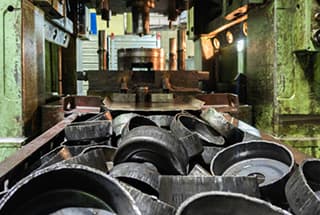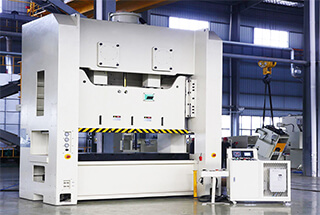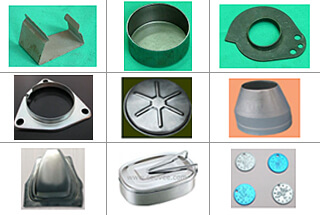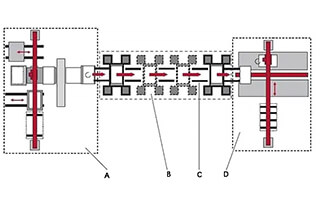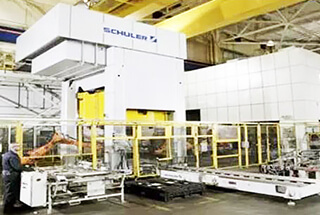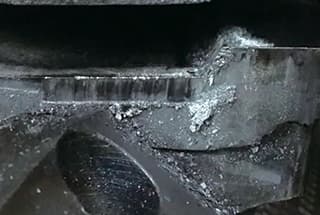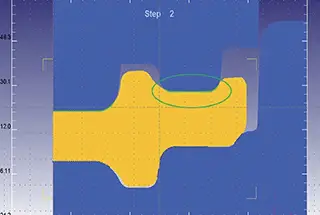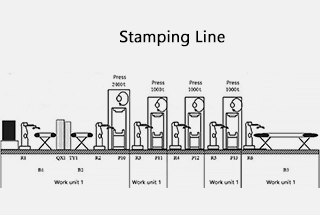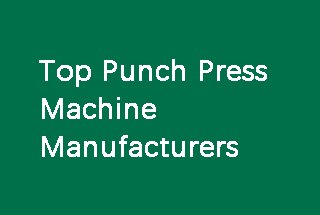
Have you ever wondered how cars are made so quickly and safely? This article unveils the magic behind automated stamping production lines, where robots replace manual labor, boosting efficiency by 35% and eliminating injury risks. Dive in to explore the fascinating world of high-speed, automated manufacturing and see how it revolutionizes the automotive industry!
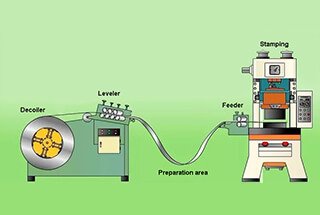
In conventional stamping production lines, material handling between upstream and downstream equipment traditionally relied on manual labor. However, as production speeds have escalated, this manual approach to part loading and unloading has become both inefficient and a significant safety concern.
Operators, under pressure to maintain high throughput, often overlook the inherent dangers associated with rapidly moving machinery. This has led to an alarming frequency of accidents, particularly incidents where hands are caught and injured by press equipment. To address these safety issues and simultaneously boost productivity, robotic automated production lines have been developed and implemented.
Automated production systems utilize sophisticated material handling equipment to transfer sheet metal components between sequential press operations, eliminating the need for manual intervention. This approach not only mitigates the risk of workplace injuries but also significantly enhances production efficiency, with typical improvements of approximately 35% in throughput.
The period following 2005 saw a dramatic acceleration in the adoption of automated production technologies for stamping operations within the domestic automotive manufacturing sector. This shift marked the dawn of a new era in stamping automation. Figure 1 illustrates a schematic representation of a modern automated stamping production line, highlighting the integration of robotic systems, transfer mechanisms, and press equipment in a seamless workflow.
These advanced lines often incorporate features such as servo-driven presses for improved precision and energy efficiency, vision systems for real-time quality control, and intelligent control systems that optimize production parameters based on real-time data. The implementation of Industry 4.0 principles has further enhanced these systems, enabling predictive maintenance, digital twin simulations for process optimization, and seamless integration with enterprise resource planning (ERP) systems.

Figure 1 Schematic diagram of automatic stamping production line
Currently, the most widely used presses are mechanical closed presses, which can be used for various cold stamping processes such as blanking, forming, bending, correction, and shallow drawing of thin plate parts. The process parameters of the press are crucial, as they not only affect the quality of the product but also have a significant impact on efficiency, cost, and safety.
The following section provides a brief overview of the important parameters and accuracy of some presses:
Press basics
The foundation of the press must support its weight and withstand the vibrational forces generated when the press starts, and transfer these forces to the ground beneath the foundation. The foundation must be able to reliably withstand 0.15 MPa. The strength of the foundation is designed and constructed by the civil engineering department based on the local soil quality. The concrete foundation must be poured in one continuous operation without interruption.
After filling the foundation with concrete, the surface should be smoothed once and then smoothed again using a shovel or sandpaper. To protect against oil, the bottom surface of the foundation should be coated with acid-resistant cement. The basic drawing provides the internal dimensions of the foundation, which represents the minimum space required to install the press.
Indicators of strength such as the cement brand, the arrangement of reinforcing bars, the size of the foundation bearing area, and the thickness of the foundation must not be altered. The basic bearing capacity must be greater than 1.95 MPa.
Guide post synchronization
Guide post: It connects the beam gearbox and the slider, transmitting the decelerated motion of the gearbox to the slider to achieve the vertical movement of the slider.
Generally there are single-point, double-point and four-point types, that is, one guide post, two guide posts, or four guide posts.
Guide post synchronization:
It refers to the synchronization accuracy of the two- or four-point press guide columns in their upward and downward movement. This parameter is typically established before the press leaves the factory. The accuracy of the guide post synchronization must be maintained within 0.5mm. Excessive misalignment will result in significant tensile stress on the slider force, affecting the quality of the product formed at the bottom dead point.
Mold mounting height
The mounting height refers to the distance between the bottom surface of the slider and the top surface of the table. There are maximum and minimum limits for the mounting height. When designing the die, consideration should be given to the possibility of installing and using the mold after grinding. The closed height of the mold should not reach the maximum or minimum limit values for the press mold height.
Figure 2 shows a schematic diagram of the press mounting height.
Nominal force of the press
Nominal force refers to the maximum punching capacity that the press can safely handle in its structure. In practice, factors such as material thickness and strength deviation, mold lubrication, and wear should be taken into account to ensure an adequate margin for stamping capacity.
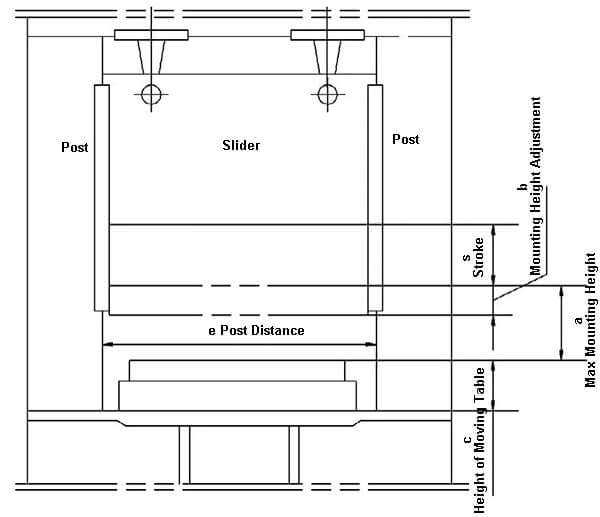
Figure 2 Schematic diagram of the mounting height of the press
When performing an impact load operation such as blanking, it is recommended to limit the working pressure to 80% or less of the nominal force. Exceeding this limit can result in significant vibration and damage to the connection between the slider and transmission, affecting the normal lifespan of the press. Figure 3 shows the nominal load vs. allowable load curve.
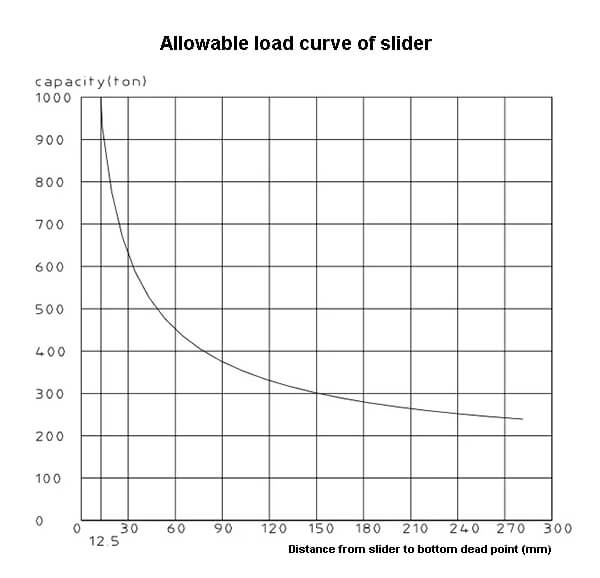
Figure 3 Allowable load curve of nominal force
Compressed air pressure
Compressed air is the main source of power for ensuring the smooth operation of the press and also serves as the control loop source for the press’s power source. The demand for compressed air pressure varies at different locations. The compressed air pressure provided by the factory is based on the maximum demand value of the press. Parts with lower demand values are equipped with pressure-reducing valves for regulation.
Compressed air in the stamping automation production process can be divided into two categories: product quality and action function. The product quality category is used for shaping the quality of the product, such as air cushion pressure. The action function category is involved in controlling the press’s actions, such as clutch pressure.
Using the press of one fabrication company as an example, Table 1 shows the compressed air pressure values required for each functional module of the press. There are many more parameters to the press than the five listed above.
The following is a brief summary and display of the company’s press parameters (Table 2) for your reference.
Table 1 Required compressed air pressure value of each functional module
| No. | Item | Supply air pressure MPa | Pressure regulating valve position | Note | |
|---|---|---|---|---|---|
| 1 | Total air supply | ≥0.5 | |||
| 2 | Clutch | 0.32 | Beam walking platform | ||
| 3 | Balancer | 0.47 | Inside left front post | Calculated value without mold | |
| 4 | Hydraulic protection | Air pump | 0.29 | Inside slider | Calculated |
| 5 | Unloading valve | 0.32 | Inside slider | Calculated | |
| 6 | Stretch pad | 0.04 ~ 0.8 | Inside left front post | ||
Table 2 Summary of press parameters
| No | Item | Value | Unit | |
|---|---|---|---|---|
| 1 | Nominal force | 10000 | kN | |
| 2 | Nominal force stroke (before the bottom dead center) | 12.5 | mm | |
| 3 | Slider stroke length | 1000 | mm | |
| 4 | Number of slide strokes (during dry running) | Continuous | 8-12 | Times / minute |
| Maximum single | 8 | |||
| Fine-tuning | 3 | |||
| 5 | Maximum loading height | 1350 | mm | |
| 6 | Loading height adjustment | 500 | mm | |
| 7 | Rail distance | L*R | 4970 | mm |
| 8 | Slider bottom surface size | L*R | 4600 | mm |
| F*B | 2400 | mm | ||
| 9 | Worktable size | L*R | 4600 | mm |
| F*B | 2400 | mm | ||
| 10 | Worktable thickness | 300 | mm | |
| 11 | Movable worktable | Moving way | Move left and right | |
| Quantity | 2 | Pcs | ||
| Height of moving table | 700 | mm | ||
| Carrying weight | 50 | t | ||
| 12 | Slider | Rail type | Right-angle guide | |
| Beating type | / | |||
| Beating force | / | kN | ||
| Beating stroke | / | mm | ||
| Number of beater | / | Pcs | ||
| 13 | Stretch pad | Type | Pure gas single crown | |
| Quantity | 1 | Pcs | ||
| Ejection force | 4500 | kN | ||
| Blank holding force | 4500 | kN | ||
| Stroke | 0 ~ 300 | mm | ||
| 14 | Balancer balance force (at 0.62MPa air pressure) | 200 | kN | |
| 15 | Inlet air source pressure | 0.7 | MPa | |
| 16 | Free air consumption | 1 | m³ / min | |
Conclusions
The press is the primary equipment in the stamping production process. With the rapid growth of the automotive industry, there has been a corresponding increase in demand for high-precision equipment. The development of the stamping process has gone through three stages: manual production line, automated intermittent production, and automated high-speed continuous production. In each iteration of the model’s update, the production equipment plays a crucial role.
Now that we have a basic understanding of the press, let’s move on to the topic of automatic production lines.
The automatic stamping production lines mainly include: progressive die stamping, multi-station stamping, and tandem stamping.
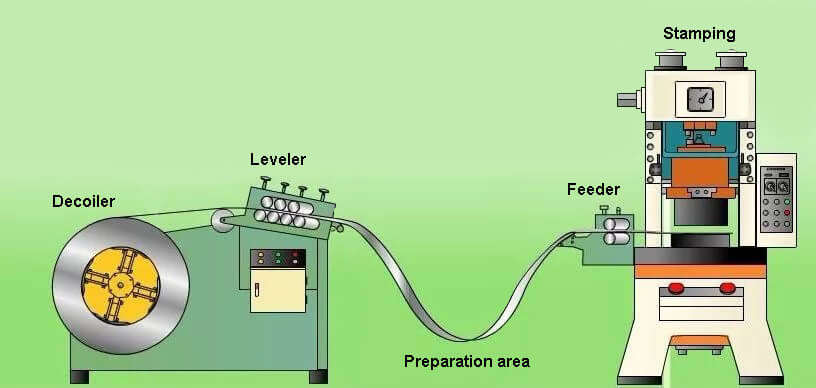
Due to their unique characteristics, these production lines are used to produce different automotive sheet metal parts and play a significant role in automotive automation and efficient production systems. This article compares and analyzes the characteristics of these three stamping automation production lines and provides guidance on selecting a production line based on its characteristics.
This will make it easier for enterprises to choose a production line that suits their specific part characteristics. With the rapid growth of the automobile industry, the four major stamping industries for car manufacturing have also flourished. To meet increasing output, various automated production lines have emerged, each with its own characteristics suited to different products.
This article categorizes common stamping automation production lines into progressive die stamping, multi-station stamping, and tandem stamping, and briefly analyzes the characteristics and selection methods of each production line to aid enterprises in choosing the right production method for their product characteristics.
(1)Overview:
The automatic production line for progressive die stamping is a production line that employs progressive die stamping and typically consists of an uncoiling feeder, a punch, a progressive die, and an automatic blanking line. It automates the process of unwinding the coil, flattening the strip, oiling the strip, stamping it into pieces, and collecting the finished products offline.
The most important component is the progressive die, which consists of multiple stations, up to over 20 stations. Each station is connected to one another to complete different processing tasks, such as punching, trimming, flanging, shaping, blanking, and so on. All these tasks are completed in a single stroke of the press. After one stroke is finished, the feeder advances the material strip by a fixed step, allowing multiple processes to be completed in a single reciprocating punch of the press.
As shown in Figure 1.
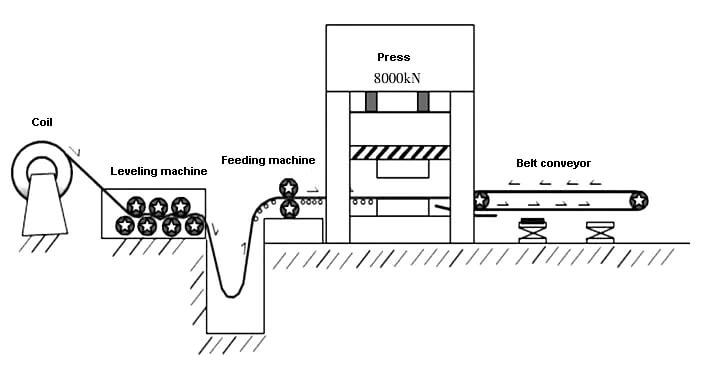
Figure 1 Simplified diagram of progressive automatic production line
(2) Features:
The production cycle of the progressive die stamping automation production line is relatively high, generally up to 30 times / min.

Figure 2 Progressive die layout process
(1)Overview:
A production line with multiple independent station molds (usually 4 to 5) located on a large-tonnage press table uses a destacker or unwind feeder for loading, an automatic feed bar for transferring processed parts, and an automatic conveyor belt to collect finished products offline. As shown in Figure 3.”

Figure 3 Multi-station stamping automation production line
(2)Features
The bottom material can be either a roll material or a blank, which provides flexibility and improves the material utilization rate. The production line uses automatic rod feeding and has a lower punch rate compared to the progressive die production line but a higher rate than the traditional tandem production line, resulting in higher production efficiency.
It can also incorporate sensors such as loading and unloading sensors, dual material detection, grip sensors, in-mold sensors, etc. to monitor the position and status of the material and product during production, ensuring high safety.
There are strict requirements for the feeding height and stamping direction of the molds at each station, and to maintain stability in feeding, the states of each process must generally be consistent.
(1)Overview:
An automated production line is formed by arranging multiple presses in a series. Each press table holds a pair of molds, which represents one stage of the production process. The loading, transfer of processed parts, and unloading and packing work are carried out by an automatic mechanical arm or robot. As shown in Figure 4.
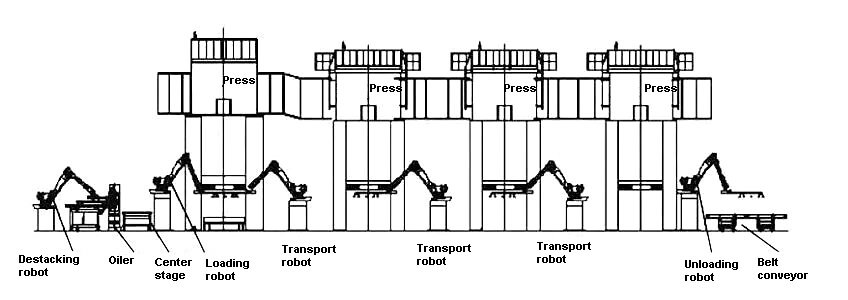
Figure 4 Automatic production line for tandem stamping
(2)Features
It has a wide range of applications and can be used in the production of various stamping components. There are no strict requirements on the size, shape, and thickness of these components, allowing for great flexibility in producing large-scale cover parts.
However, the production efficiency is low due to the use of a robotic arm for feeding, which limits the cycle time. Compared to progressive production lines and multi-station production lines, this method is less efficient.
On the other hand, mold maintenance and debugging is made easier. Each mold belongs to a separate press, allowing for independent clamping and working parameters. This means that maintenance and debugging of each mold can be performed separately without affecting other processes.
The downside is that this method requires a large production plant area. A traditional series production line typically includes 4 to 5 presses, taking up a significant amount of space.
When choosing a stamping automation production line, several critical factors must be carefully evaluated to ensure optimal performance, efficiency, and product quality:
(1) Material Characteristics:
Assess the material’s properties, including its formability, tensile strength, and hardness. These factors influence the choice between coil and sheet feeding systems, as well as the specific tooling requirements. For example, high-strength steels may require more robust press systems and specialized die designs to prevent springback and achieve tight tolerances.
(2) Material Thickness and Dimensional Range:
Consider both the material thickness and the range of dimensions for your product line. This information is crucial for:
(3) Production Volume and Demand Fluctuations:
Analyze your monthly production requirements and potential demand fluctuations. This assessment helps in:
(4) Product Complexity and Quality Requirements:
Examine the intricacy of your stamped parts and the associated quality standards:
(5) Future Production Needs:
Anticipate potential changes in your product mix or volume:
(6) Total Cost of Ownership:
Look beyond the initial investment to consider:
(7) Integration with Existing Systems:
Assess how the new stamping line will integrate with your current:
Progressive die stamping automation production line
According to the characteristics of each process distributed on a strip and the maximum process punches that can be achieved, it can be used for producing small parts on the car body and can provide a high supply.
Multi-station stamping automation production line
It can be utilized for rapid production of medium-sized parts that are resistant to deformation. Symmetrical parts with complex left and right shapes, as well as products that can be gripped by the automatic lever, can be produced on an automatic line.
Tandem stamping automation production line
Due to the independent distribution of each process on each press, this production line boasts the highest level of flexibility. It is ideal for producing large, complex parts and facilitates the debugging of individual processes and independent production, making it easy to maintain high quality control over the products.
The characteristics of the three production lines are shown in Table 1
| Advantages | Disadvantages | Applications | |
|---|---|---|---|
| Progressive | ① High impact times, high efficiency and high output ② Small footprint | ① Poor material utilization ② Only suitable for small parts ③ The mold for individual pieces is large and challenging to debug. | ① Small structural parts with high demand |
| Transfer | ① High level of automation efficiency ② Capable of producing a wide variety of products ③ High utilization of materials ④ Equipped with numerous automated safety detection devices. | ① The design process of the product has higher demands for the joint installation of molds. ② The combined installation of molds leads to inconvenient debugging and maintenance. ③ The production lines have low interchangeability and require specific molds for production on a single line. | ① Beam parts, reinforcement parts, baffle parts, etc. are regular in shape and easy to clamp, and the whole process can be distributed on the same workbench. ② Parts with larger demand |
| Tandem | ① Most applicable product types ② Flexible delivery methods for loading and unloading and process parts ③ High interchangeability of production line ④ Easy debugging and maintenance ⑤ High material utilization | ① Large footprint ② Low production efficiency | ① Large parts and covering parts ② Parts with complicated technology and high quality requirements |
The choice between stamping automation production lines can be made based on two priorities: high output and high flexibility.
For a large volume of parts, an automated production line with high efficiency and high output should be selected.
If the parts are complex and require advanced production technology, a flexible production line should be considered.
This is depicted in a simple illustration in Figure 5.
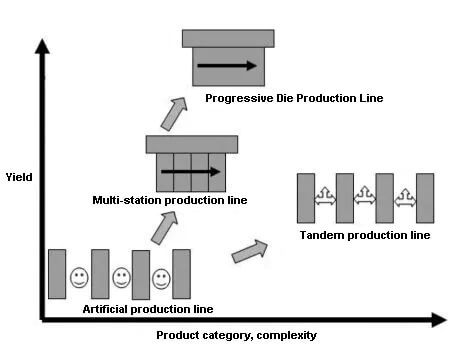
Figure 5 Special intention of 3 production lines
Based on their unique characteristics, stamping automation production lines are widely used in major automobile factories, providing robust support for the growth of the automotive industry and the rapid increase in automobile production.
Understanding and analyzing the stamping automation production line helps in the selection of the stamping production method and leverages the strengths of the respective automatic lines to benefit the automotive sector.
Abbreviated abroad::P.R.G /T.R.F/T.D.M
Which stamping automation production method should be selected is generally considered from the following factors:
Progressive die automation method
A progressive die is a type of cold stamping die that uses a strip-shaped raw material and performs multiple stamping processes simultaneously in one stamping cycle using multiple stations.
With each punch, the strip moves a fixed distance until the final product is completed.
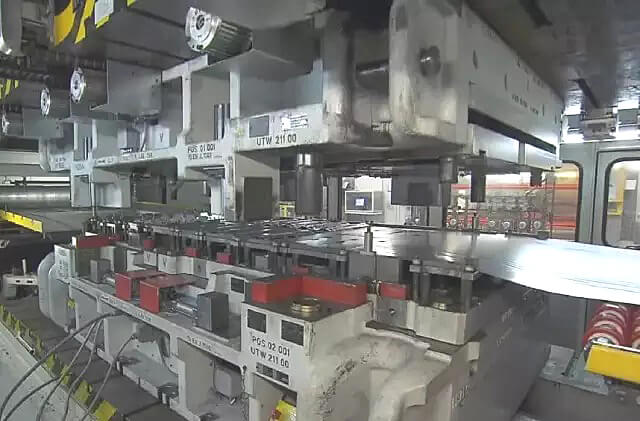
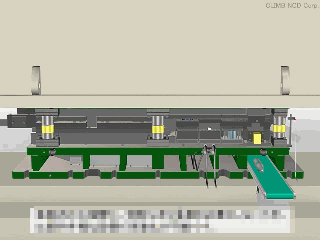
Multi-station automation method (Transfer)
The multi-station punching technique involves arranging multiple process molds on a punch press and utilizing the one-time reciprocation of the punch slider to perform various operations such as blanking, punching, bending, stretching, trimming, etc. simultaneously on the molds installed on the machine tool. The robot transfers the workpiece from one station to the next during each cycle to produce a finished part.
It can be classified into two-dimensional and three-dimensional manipulators.
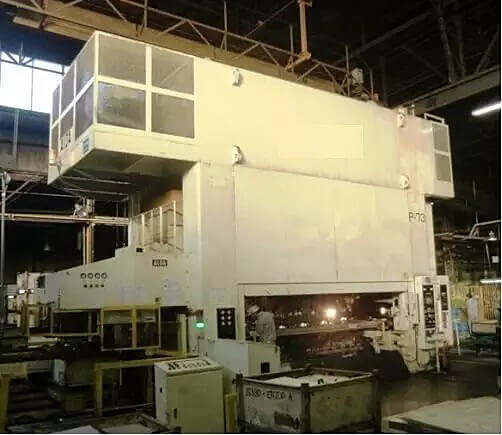
Three-dimensional handling method
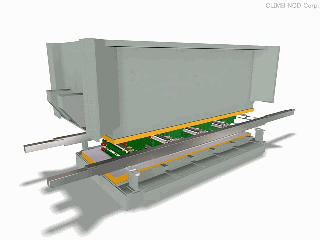
Tandem Automation Method (Tandem)
Multiple punches are arranged in a series to create an entire stamping production line, with each punch’s die corresponding to a separate forming process.
The transfer of materials between the punches is handled through robotic automation.
This method is primarily suitable for product lines with low output demands, limited processing steps, and independent production lines that are highly flexible.
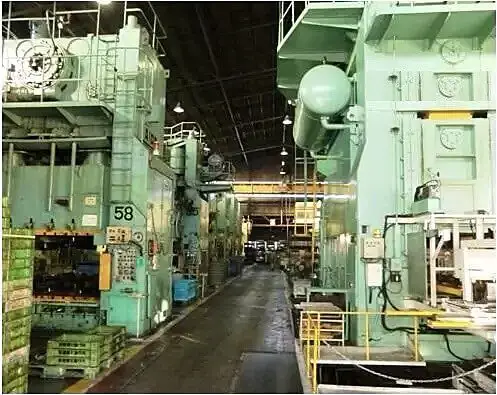
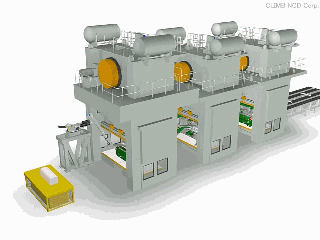
-END-

